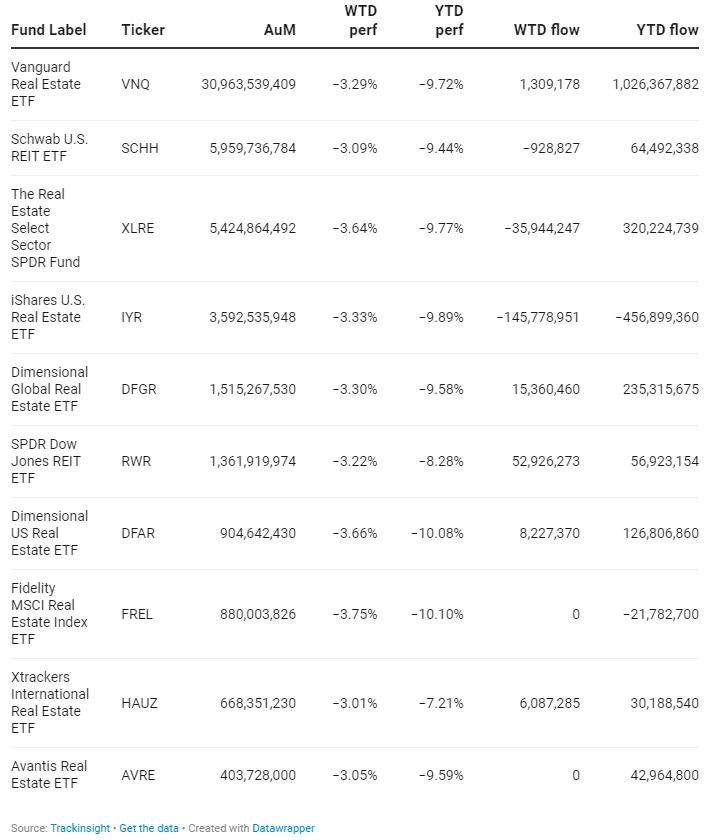Real estate ETFs are facing significant headwinds, entering their third consecutive week of downturns (-3.16% week over week) and affirming their position as this year's laggard with a 9.3% year-to-date loss. This article delves into the challenges faced by Real Estate ETFs amidst the prevailing high interest rate environment.
The Impact of High Interest Rates on Real Estate
The performance of the real estate sector is closely tied to interest rate movements. High interest rates increase borrowing costs for purchasing properties, which logically dampens investment in real estate. This fundamental truth has been starkly evident in recent times. Concerns about rising Treasury yields were even intensifying this week as Atlanta Fed President Raphael Bostic warned that the U.S. central bank could hike interest rates if inflation remained sticky. Therefore, it comes as no surprise that the U.S. 10-year Bond yield has increased by 74 basis points since the end of 2023. This constraint is all the more significant as the sector is already facing serious challenges such as rising vacancy rates and changing demands for office space in the wake of the COVID-19 pandemic.
Shifting Expectations and Continued Struggles
Investors had harbored hopes of a rate cut by the Federal Reserve in the second quarter of the year. However, the announcement that such a cut would not materialize until at least next September shattered these expectations. This delay is particularly detrimental to the real estate sector, known for its sensitivity to interest rate fluctuations.
ETF focus
As an illustration, the Vanguard Real Estate ETF (VNQ+0.35%), managing almost $31 billion in assets, lost 3.29% for the week, registering a year-to-date performance of -9.72%. The iShares U.S. Real Estate ETF (IYR+0.34%) recorded a weekly decline of 3.33% over the week and suffered $146 million in outflows.
Group Data

Index Data


